
Driving route from Gastonia to Charlotte DOT Exam Center for DOT physical exams.
Clinic Location and Directions from Gastonia
Charlotte DOT Exam Center provides DOT physical exams for commercial drivers from Gastonia and throughout the Charlotte metro area. The clinic address is 8415 Pineville Matthews Road, Suite 102, Charlotte, NC 28226. Suite 102 is important for GPS navigation and building entry.
Gastonia drivers reach the clinic in 35-40 minutes via I-85 East to I-485 South, then to the Pineville Matthews Road exit.
Gastonia and Gaston County have a strong manufacturing and trucking presence. Drivers from this area benefit from Charlotte DOT Exam Center’s experience with industrial and commercial fleet requirements.
Driving Directions from Gastonia
From Gastonia, take I-85 East toward Charlotte. Continue approximately 18 miles and merge onto I-485 South (toward Pineville). Continue on I-485 for approximately 8 miles to Exit 57 (Johnston Road). Head north on Johnston Road and turn right onto Pineville Matthews Road. The clinic is at 8415 Pineville Matthews Road, Suite 102.
Drivers from Gastonia neighborhoods including Downtown Gastonia, Eastwood, Cramerton, and Belmont regularly schedule DOT physicals at this location. The clinic accepts walk-ins based on same-day availability, though scheduling an appointment reduces wait time. For complete service area details, see locations served for DOT physical exams in Charlotte NC.
DOT Physical Requirements
The Federal Motor Carrier Safety Administration (FMCSA) establishes DOT physical requirements under 49 CFR 391.41. These federal standards apply to all commercial motor vehicle drivers regardless of state.
DOT physical requirements include evaluation of:
- Vision: At least 20/40 acuity in each eye with or without correction, plus adequate peripheral vision and color recognition. See DOT vision requirements.
- Hearing: Ability to perceive a forced whisper at 5 feet or pass audiometric testing. See DOT hearing test standards.
- Blood pressure: Readings affect certification length. Stage 1 and Stage 2 hypertension may result in shorter certification periods. See blood pressure and DOT exam.
- Cardiovascular health: Heart conditions, stents, pacemakers, and bypass surgery have specific waiting periods and documentation requirements. See DOT physical heart conditions.
- Neurological function: Seizure history, stroke, and other neurological conditions require evaluation. See neurological requirements for DOT physicals.
- Diabetes management: Insulin-treated and non-insulin-treated diabetes have different certification pathways. See diabetes and DOT physicals.
- Sleep disorders: Sleep apnea screening and treatment compliance affect certification. See sleep apnea and DOT certification.
- Mental health: Certain psychiatric conditions require evaluation and documentation. See DOT mental health requirements.
The medical examiner must be listed on the FMCSA National Registry of Certified Medical Examiners. Dr. Lemuel P. Byrd, Jr. at Charlotte DOT Exam Center maintains active FMCSA certification.
DOT Medical Card Certification Periods by Condition
Certification length depends on your health status and medical history. The following table shows typical certification periods based on common conditions.
| Condition | Certification Period | Documentation Required |
|---|---|---|
| Healthy driver (no conditions) | 2 years | None beyond standard exam |
| Blood pressure under 140/90 | 2 years | None |
| Blood pressure 140-159/90-99 (Stage 1) | 1 year | Annual monitoring |
| Blood pressure 160-179/100-109 (Stage 2) | 1 year (one-time) | Treatment documentation required |
| Blood pressure 180+/110+ (Stage 3) | Disqualified until controlled | Physician clearance required |
| Diabetes (non-insulin, well-controlled) | 2 years | A1C results, medication list |
| Diabetes (insulin-treated) | 1 year | Endocrinologist clearance, ITDM packet |
| Sleep apnea (treated, compliant) | 1 year | CPAP compliance report (30+ days) |
| Heart stent (PCI) | 1 year | Cardiologist clearance after 1-week wait |
| Heart attack (MI) | 1 year | Cardiologist clearance after 2-month wait |
| Bypass surgery (CABG) | 1 year | Cardiologist clearance after 3-month wait |
| Seizure history (controlled) | Varies | Neurologist clearance, seizure-free period |
For more details on specific conditions, see complete guide to DOT physical failures and three-month DOT medical card limits.
What to Bring to Your DOT Physical
Arriving prepared reduces exam time and prevents delays. Bring these items to your DOT physical:
- Government-issued photo ID (driver’s license, passport, or state ID)
- Complete list of current medications with dosage and frequency
- Glasses or contact lenses if used for driving
- Hearing aids if used
- CPAP compliance report if treating sleep apnea (minimum 30 days of data)
- Specialist clearance letters for heart conditions, seizure history, or other monitored conditions
- Blood sugar log if diabetic (especially for insulin-treated diabetes)
For a complete preparation guide, see preparing for your DOT medical exam and the DOT physical requirements checklist.
Common Medical Conditions and Certification
Many medical conditions are certifiable with proper documentation and treatment. Charlotte DOT Exam Center has experience with complex cases and can advise on documentation requirements.
Common conditions evaluated during DOT physicals include:
- Hypertension: Blood pressure under 140/90 typically qualifies for 2-year certification. Higher readings result in shorter periods. See borderline blood pressure and DOT exam.
- Diabetes: Non-insulin-treated diabetes with good control may qualify for 2-year certification. Insulin-treated diabetes requires additional documentation. See FMCSA insulin guidelines.
- Sleep apnea: Treated sleep apnea with documented CPAP compliance often qualifies for 1-year certification. See sleep apnea DOT physical requirements.
- Heart conditions: Stents, bypass surgery, and heart attacks have mandatory waiting periods before certification. See heart conditions and DOT certification.
For drivers who need additional time to gather documentation or manage a condition, the medical examiner may issue a shorter certification period. See three-month DOT medical card limits for details on temporary certifications.
After Your DOT Physical
Qualified drivers receive their DOT medical card at the end of the exam. The medical examiner uploads results to the FMCSA National Registry.
North Carolina CDL holders must submit the medical certificate to the NC DMV to maintain driving privileges. The DMV updates your driving record to reflect current medical certification status.
For North Carolina submission instructions, see submit DOT medical card to NC DMV.
Frequently Asked Questions
Where do Gastonia drivers get DOT physicals?
Gastonia drivers get DOT physical exams at Charlotte DOT Exam Center, located at 8415 Pineville Matthews Road, Suite 102, Charlotte, NC 28226. The clinic is approximately 35-40 minutes from Gastonia via I-85, US-321, US-74, and Franklin Boulevard.
How much does a DOT physical cost?
DOT physical exams at Charlotte DOT Exam Center cost $70. This includes the exam, medical certificate, and FMCSA National Registry upload. See DOT physical exam cost for details.
Does Charlotte DOT Exam Center accept walk-ins?
Walk-ins are accepted based on same-day availability. Scheduling an appointment reduces wait time. Contact the clinic at 704-544-3494 to schedule.
What happens if I fail my DOT physical?
If you cannot be certified at your exam, the medical examiner explains what documentation or treatment is needed. Many conditions are certifiable with proper medical records. See complete guide to DOT physical failures.
How often do I need a DOT physical?
DOT medical cards are valid for up to 2 years for healthy drivers. Medical conditions may require annual or more frequent recertification. Your medical card shows the expiration date. See CDL renewal vs DOT medical card renewal.
Can I get a same-day DOT medical card?
Qualified drivers receive their DOT medical card at the end of the exam. Drivers needing additional documentation or specialist clearance may receive a determination pending status until records are provided.
What disqualifies you from a DOT physical?
Automatic disqualifications include uncontrolled epilepsy, insulin-treated diabetes without an exemption, certain vision or hearing deficiencies that cannot be corrected, and use of Schedule I drugs. Some conditions like implantable defibrillators (ICDs) are permanently disqualifying. Many other conditions are certifiable with proper documentation. See top DOT physical disqualifiers.
How do I prepare for DOT physical blood pressure?
To prepare for blood pressure testing, avoid caffeine and tobacco for at least 30 minutes before your exam. Get adequate sleep the night before. If you take blood pressure medication, take it as prescribed. Arrive a few minutes early to relax before testing. High readings may result in shorter certification periods. See borderline blood pressure and DOT exam.
What is checked during a DOT physical exam?
A DOT physical includes medical history review, vision testing (20/40 minimum), hearing test (whisper test or audiometry), blood pressure measurement, urinalysis (for protein, blood, and sugar), and physical examination of heart, lungs, abdomen, spine, and extremities. The examiner also evaluates neurological function and general physical condition. See what the DOT physical exam covers.
How long is a DOT medical card valid?
DOT medical cards are valid for a maximum of 2 years for drivers with no health concerns. Drivers with certain conditions receive 1-year cards or shorter certification periods. Your specific certification length depends on your health status and is printed on your medical card. See DOT medical card validity periods.
Key Takeaways About DOT Physical Gastonia NC
- Location: Charlotte DOT Exam Center is at 8415 Pineville Matthews Road, Suite 102, Charlotte, NC 28226 — approximately 35-40 minutes from Gastonia.
- Cost: DOT physical exams cost $70, including the medical certificate and FMCSA National Registry upload.
- Walk-ins: Accepted based on same-day availability. Call 704-544-3494 to schedule.
- Certification: Healthy drivers receive 2-year cards. Conditions like hypertension, diabetes, or sleep apnea may result in 1-year certification.
- Same-day cards: Qualified drivers receive their DOT medical card at the end of the exam.
- Bring: Photo ID, medication list, glasses/hearing aids, and any specialist clearance letters.
- After exam: Submit your medical certificate to the NC DMV to update your CDL status.
Schedule Your DOT Physical from Gastonia
Charlotte DOT Exam Center provides DOT physical exams for commercial drivers from Gastonia and throughout the Charlotte metro area. Our FMCSA-certified medical examiner has experience with complex cases and documentation requirements.
Examiner: Dr. Lemuel P. Byrd, Jr., D.C.
Address: 8415 Pineville Matthews Road, Suite 102, Charlotte, NC 28226
Map to Charlotte DOT Exam Center from Gastonia

I am the administrator for the Charlotte DOT Exam facility, located in Charlotte NC. I oversee the facility services providing DOT exams in accordance with the standards of the FMCSA. We also provide DOT drug testing with MRO support when required. Drug testing can also be done for non-DOT exams such as pre-employment. In order to minimize wait times, I always encourage our clients to contact us first and make an appointment.
I would also suggest that each individual wanting to test for the CDL health card read the article “Preparing For Your DOT Exam” as it lists several things to bring to the test, such as CPAP usage reports and medicine lists.

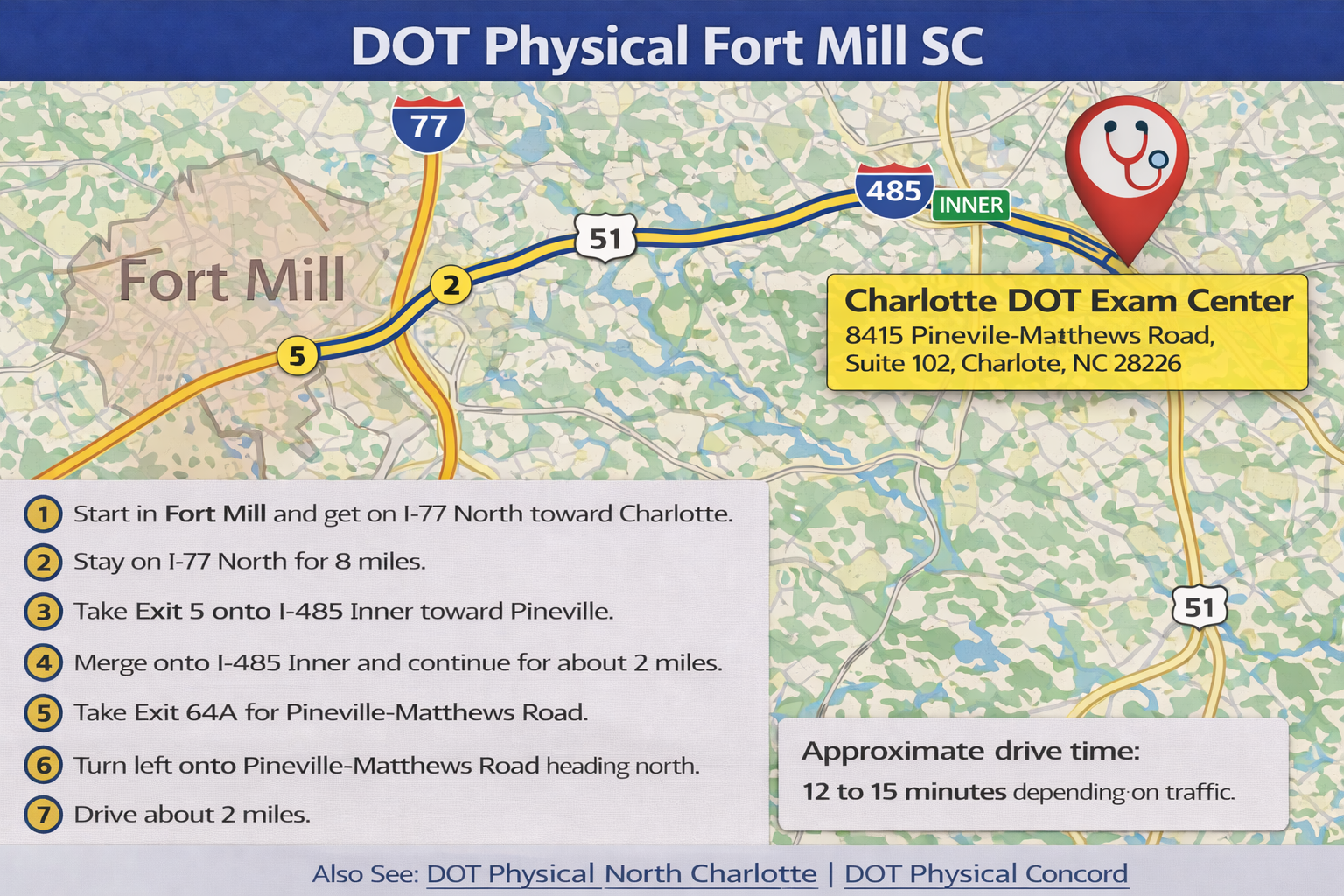





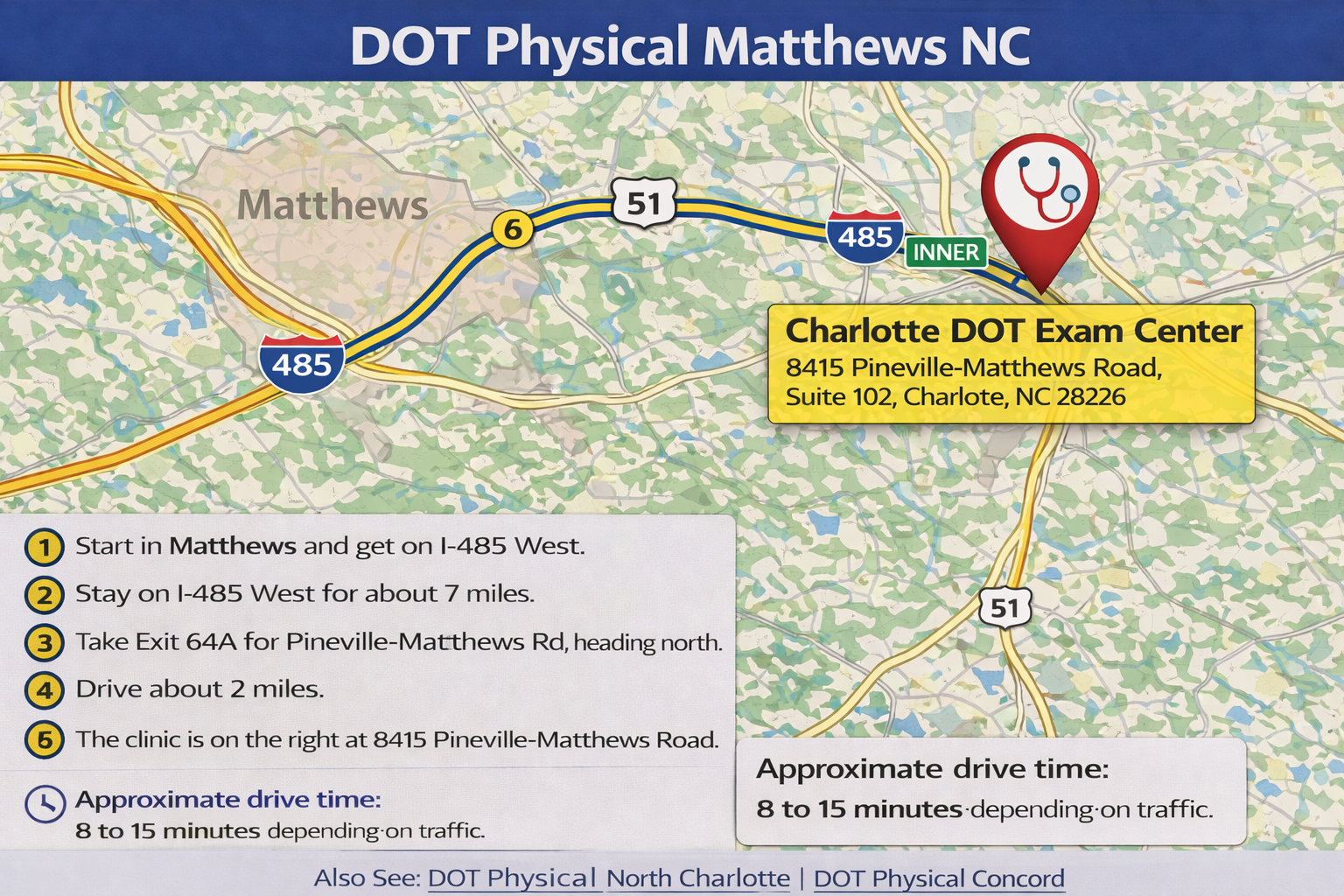
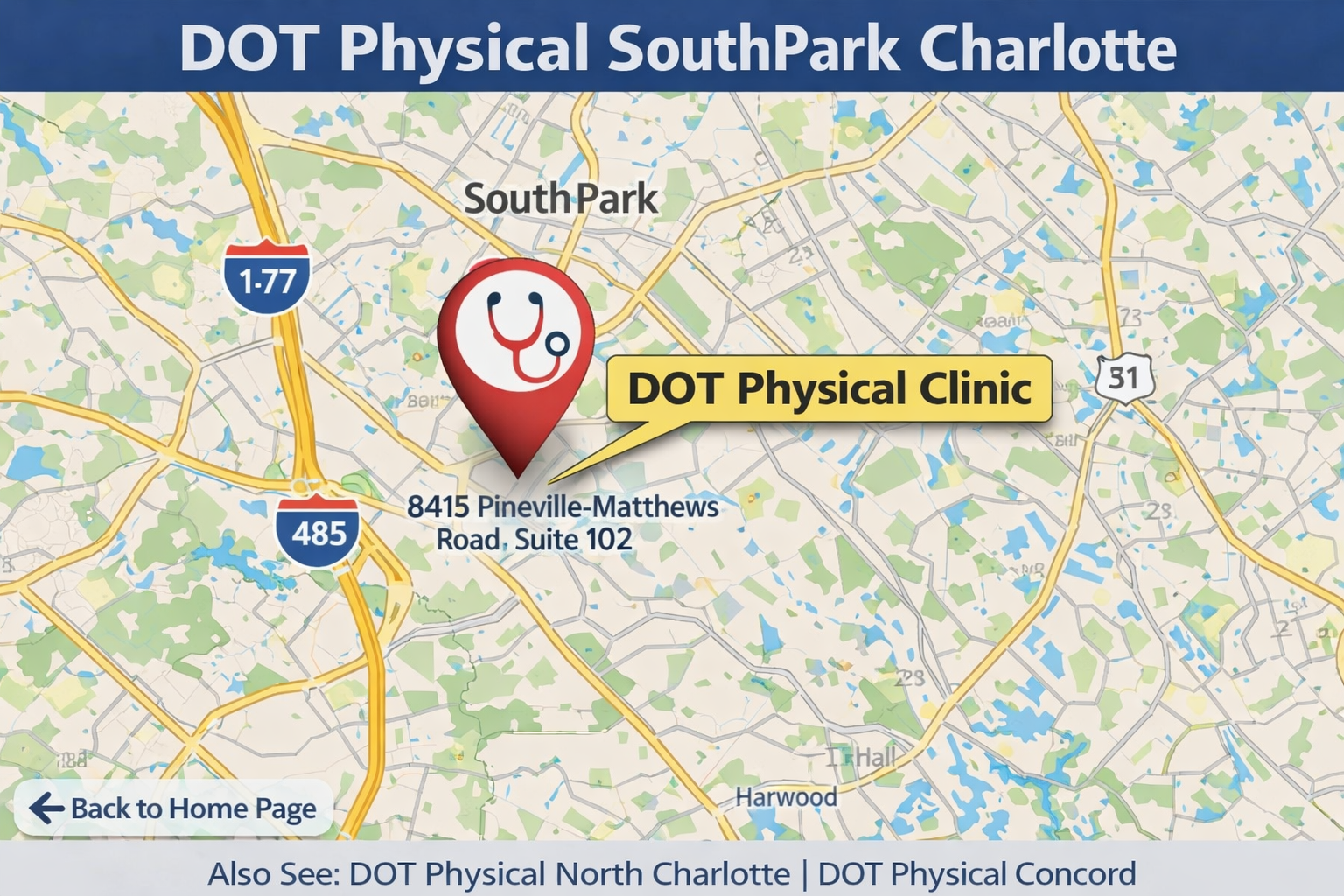



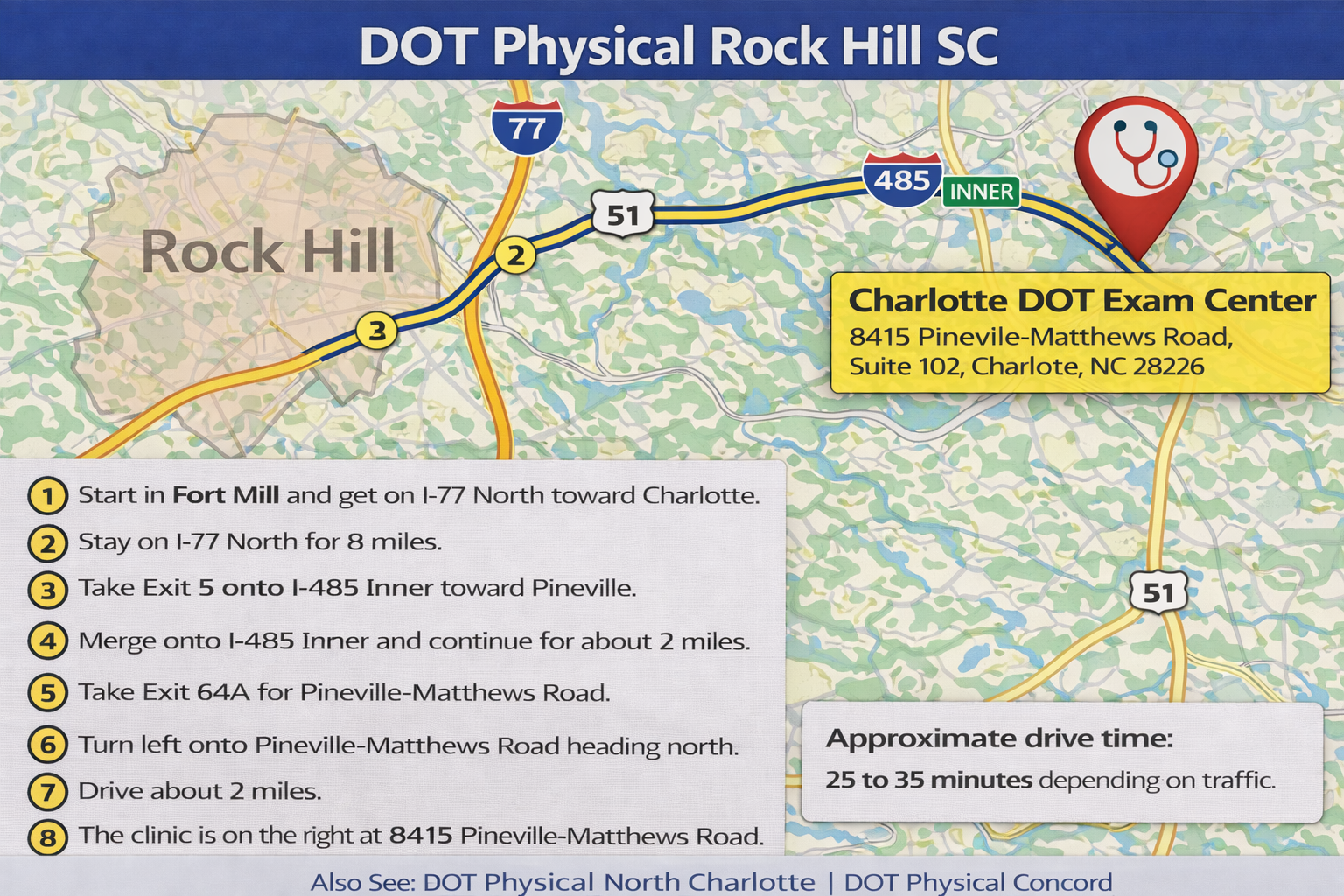




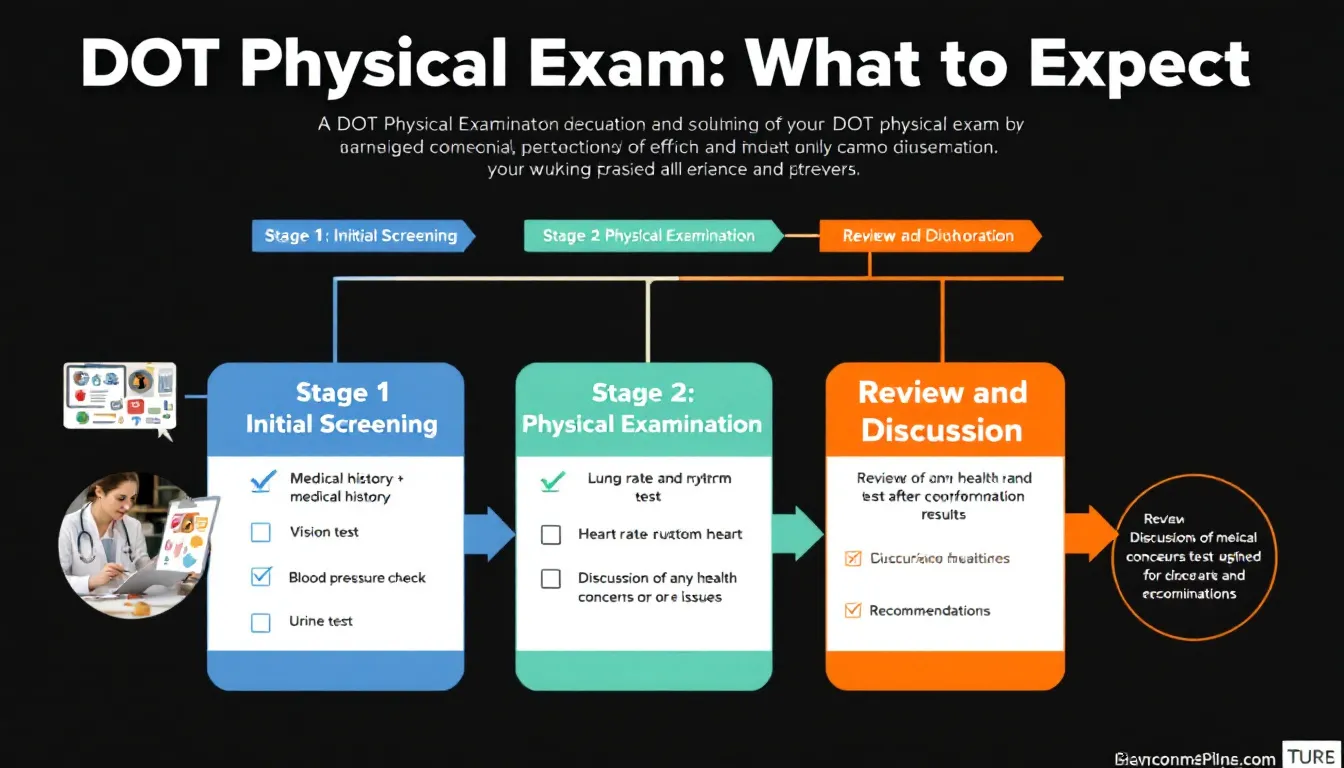




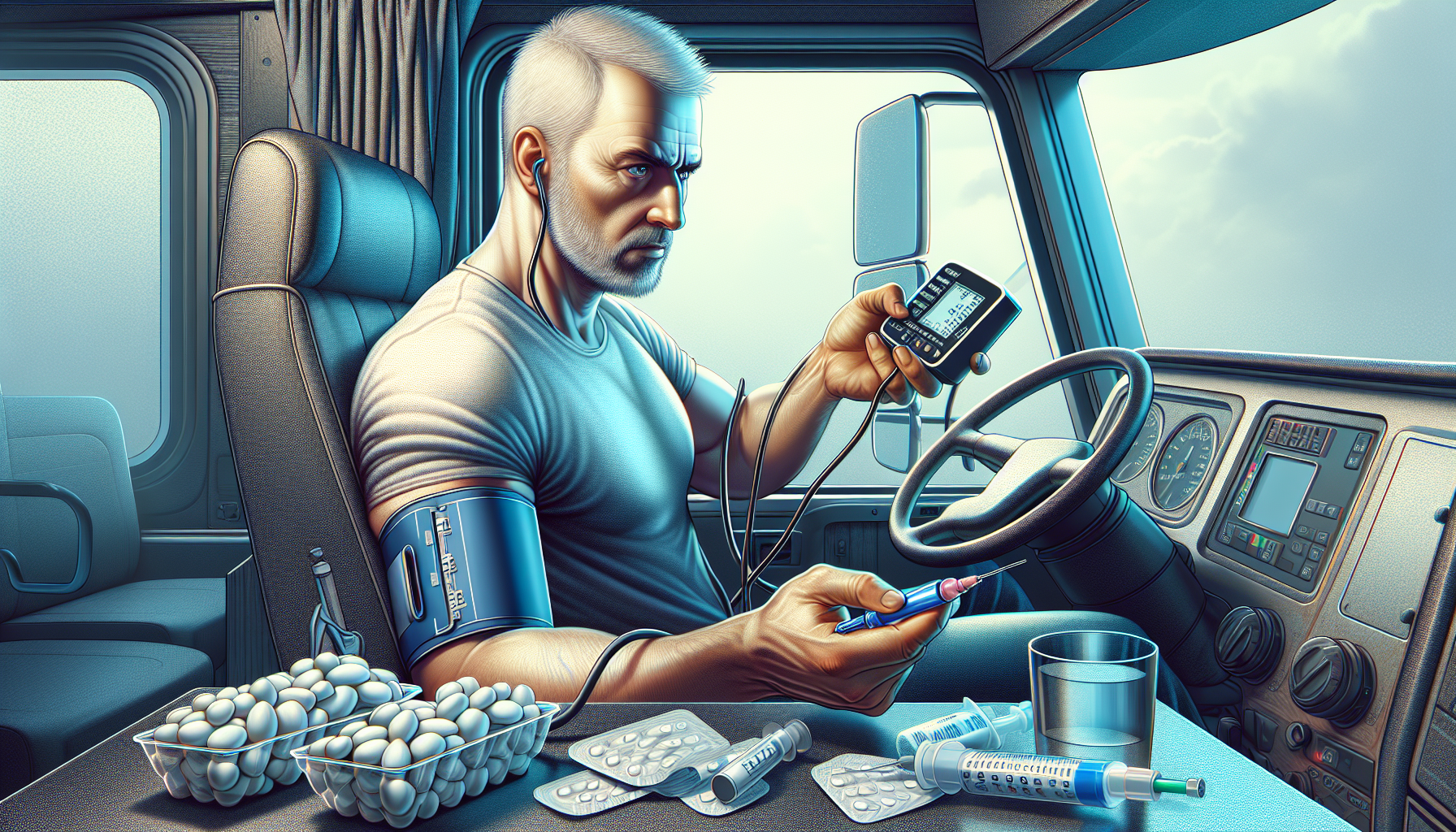



 For non-CDL operators, understanding and complying with DOT regulations is not merely about legal adherence; it’s about ensuring the safety and security of the driver, the vehicle, and the public. Staying informed and compliant with these requirements is an ongoing responsibility that demands diligence and commitment.
For non-CDL operators, understanding and complying with DOT regulations is not merely about legal adherence; it’s about ensuring the safety and security of the driver, the vehicle, and the public. Staying informed and compliant with these requirements is an ongoing responsibility that demands diligence and commitment.